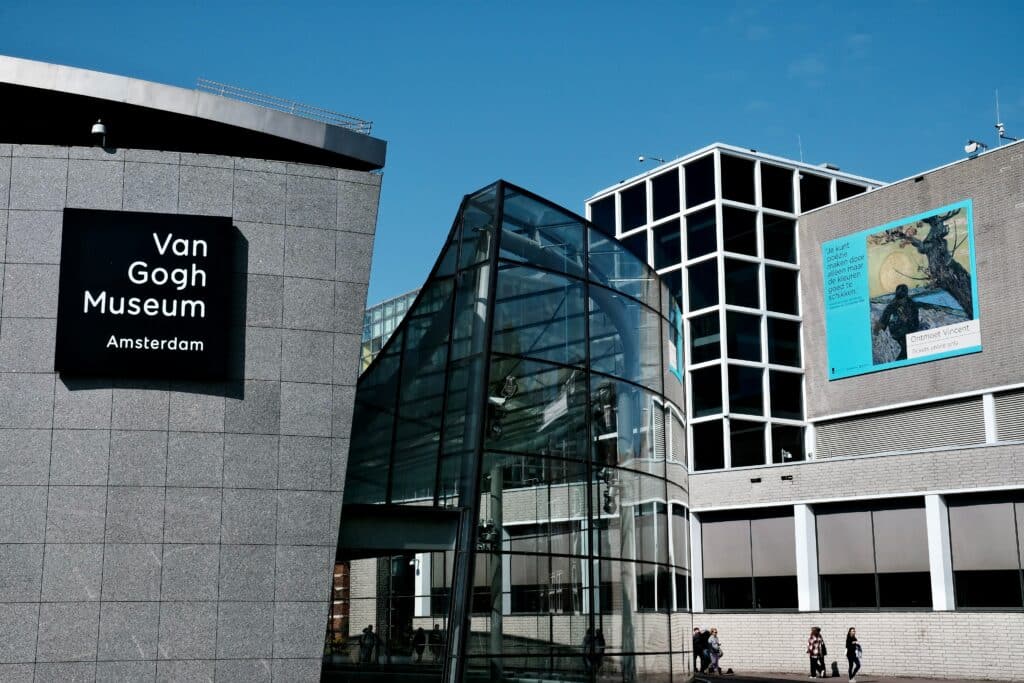La collaborazione Pokémon – Museo di Van Gogh. Quando l’arte e la cultura pop collidono
Introduzione
L’unione tra l’arte classica e la cultura pop può spesso portare a risultati interessanti, ma in alcuni casi può anche degenerare in un caos inaspettato. Un recente esempio di questa collisione si è manifestato attraverso la collaborazione tra Pokémon e il prestigioso Museo Van Gogh ad Amsterdam.
Inizialmente, questa iniziativa sembrava promettere una prospettiva innovativa sulla tradizione artistica classica, reinterpretata attraverso i famosi Pokémon. Tuttavia, anziché ricevere acclamazioni, questa collaborazione ha scatenato una frenesia di speculazioni commerciali, sollevando importanti questioni riguardo alla gestione delle collaborazioni culturali.
Ma procediamo per ordine e analizziamo la vicenda Pokémon Van Gogh.
Pokémon
Cosa sono i Pokémon e da dove viene il loro nome?
I Pokémon sono creature di varie forme e dimensioni che vivono in un mondo simile al nostro, condividendo l’ambiente umano. La parola "Pokémon" deriva dall’unione di "pocket monsters," ovvero "mostri tascabili" in inglese, con l’aggiunta di una "é" accentata per la pronuncia tra gli anglofoni. Alcuni Pokémon si ispirano a creature reali o fantastiche, mentre altri sono pura fantasia.
La collaborazione tra Pokémon e il Museo di Van Gogh
La mostra e i gadget presso il Museo di Van Gogh
Il Museo Van Gogh celebra il suo 50º anniversario con una collaborazione con The Pokémon Company, il consorzio noto per gestire il marchio Pokémon. Quest’iniziativa comprende una mostra e una linea di merchandise chiamata "Pokémon x Van Gogh," che mira a introdurre le opere di Vincent van Gogh alle nuove generazioni. La mostra è aperta dal 28 settembre 2023 al 7 gennaio 2024 e offre carte, statuette, peluche, borse e stampe in edizione limitata che reinterpretano opere famose di Van Gogh con protagonisti i Pokémon, come Pikachu, Sunflora, Munchlax e Snorlax.

La frenesia e la speculazione: la carta "Pikachu con cappello di feltro grigio"
Un grave errore è stato commesso in questa collaborazione: il museo non ha stabilito limiti all’acquisto dei gadget, consentendo a bagarini e collezionisti di esaurire rapidamente le scorte. Ciò ha portato all’invasione del museo da parte di bagarini, che hanno esaurito tutti gli oggetti in sole quattro ore, rivendendoli a prezzi gonfiati, spesso decuplicati. Una delle principali attrazioni è stata la carta promozionale "Pikachu con cappello di feltro grigio," ispirata all’autoritratto di Van Gogh. Il 28 settembre, fan e speculatori hanno cercato freneticamente di ottenere questa carta, sia per collezionismo che per rivenderla online a prezzi esorbitanti.
La frenesia si è propagata anche online, quando il merchandise in edizione limitata è stato messo in vendita nel negozio ufficiale di Pokémon. Gli articoli più popolari si sono esauriti in pochi istanti, con siti di aste che si sono riempiti rapidamente di inserzioni a prezzi gonfiati. Ad oggi (16 ottobre 2023), la carta "Pikachu con cappello di feltro grigio" è quotata a oltre 1000 euro su eBay.
Le scuse del Museo di Van Gogh e l’interruzione della distribuzione della carta di Pikachu
Questa situazione ha costretto The Pokémon Company a rilasciare delle scuse ufficiali. Il personale del Museo Van Gogh ha avuto difficoltà a gestire l’afflusso di appassionati di Pokémon. La situazione non si è risolta nei giorni successivi, portando il museo e The Pokémon Company a interrompere la distribuzione delle carte di Pikachu per motivi di sicurezza. In una dichiarazione ufficiale, si legge: "Il Museo Van Gogh e The Pokémon Company International attribuiscono grande importanza alla sicurezza dei visitatori e del personale. Di recente, un piccolo gruppo ha creato una situazione indesiderata, costringendoci a rimuovere la carta promozionale Pikachu con cappello di feltro grigio dal museo. In questo modo, i visitatori potranno godere in sicurezza della collezione di dipinti Pokémon e delle altre opere del museo."
Per chi desidera questa carta, ci saranno opportunità presso i Pokémon Center del Regno Unito, degli Stati Uniti e del Canada, o tramite rivenditori nei Paesi Bassi all’inizio dell’anno successivo.
Le riflessioni sulla vicenda
Innovare il settore museale sì, ma con quali modalità?
In conclusione, questa situazione solleva importanti interrogativi sulla relazione tra l’arte classica e la cultura pop e sulle sfide che i musei moderni affrontano per attirare nuovi pubblici. È davvero necessario ricorrere a gadget in edizione limitata per attrarre il pubblico giovane al Museo Van Gogh? Sorge il rischio che altri musei, già alle prese con chiusure e aumenti dei costi dei biglietti, seguano il modello del Museo Van Gogh diventando centri commerciali per rivendite esclusive.
L’innovazione e l’apertura a nuove forme di intrattenimento sono fondamentali per preservare la rilevanza dei musei in un mondo sempre più digitalizzato e interconnesso. Tuttavia, è altrettanto essenziale farlo con prudenza per evitare che il rispetto per l’arte e la cultura venga compromesso dalla frenesia commerciale.

amuseapp: promuovere una comprensione più profonda dell’arte
In questo contesto, aziende come amuseapp si impegnano a introdurre i giovani all’arte con soluzioni innovative per le visite al museo e sui social media, promuovendo una comprensione più profonda dell’arte e del suo valore attraverso piattaforme come Instagram e TikTok.
Visita il sito di amuseapp e scarica l’app su android e su iOs per scoprire l’arte e i Musei d’Italia in un’esperienza unica.

